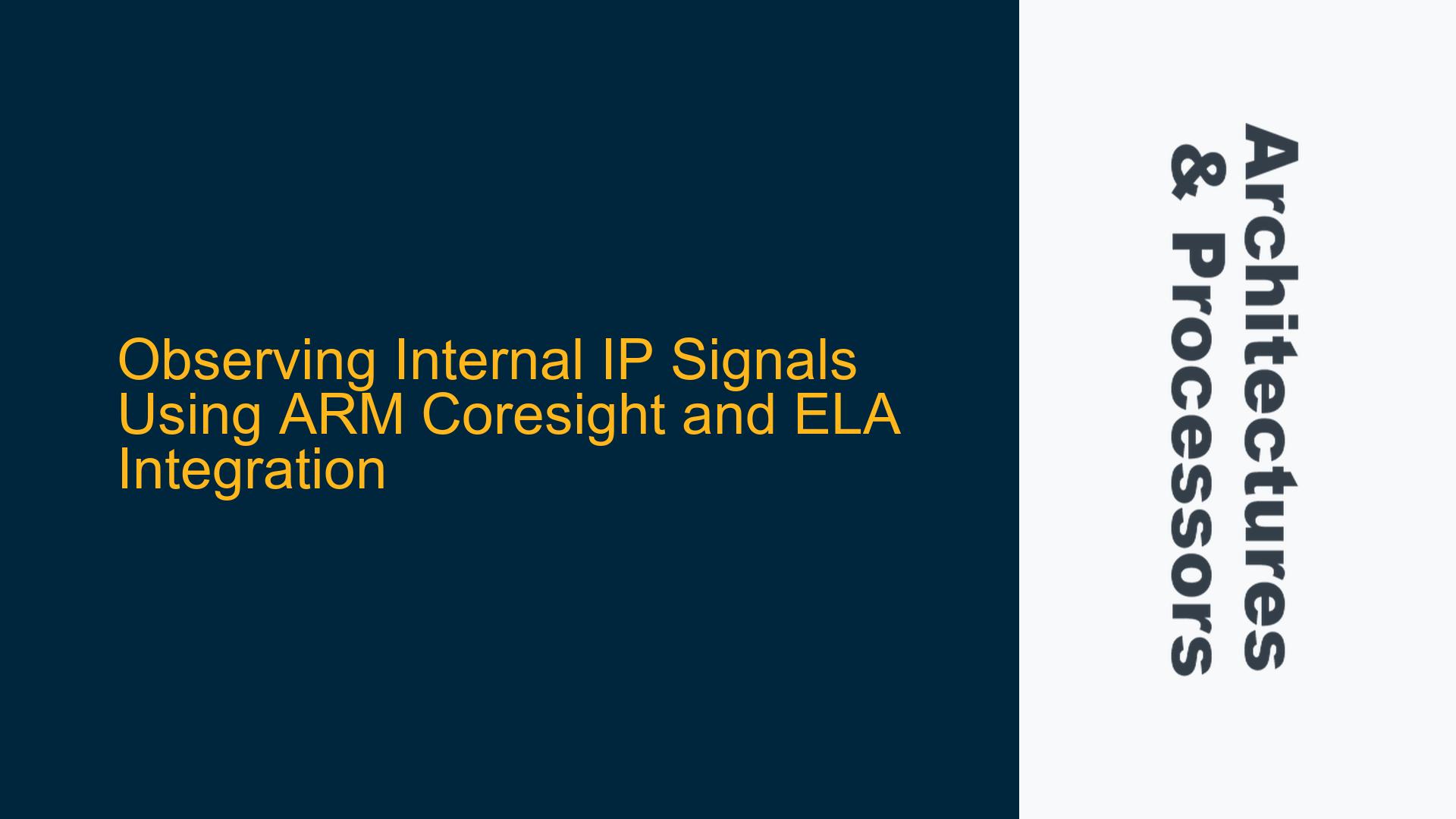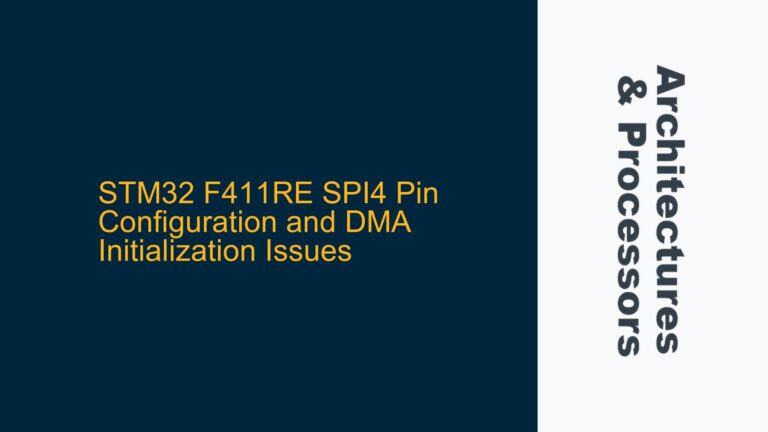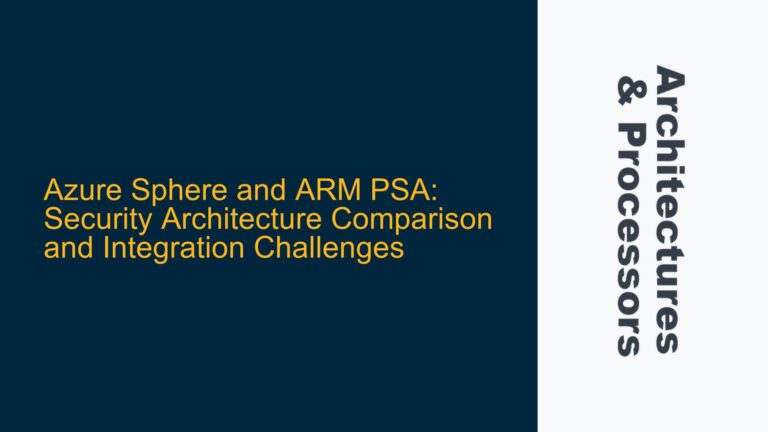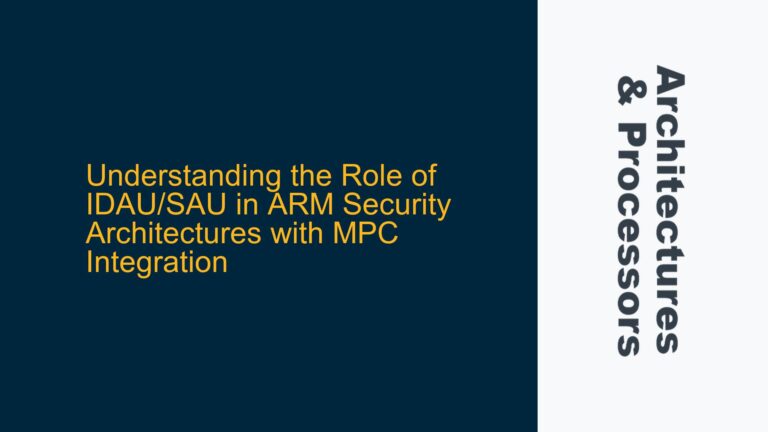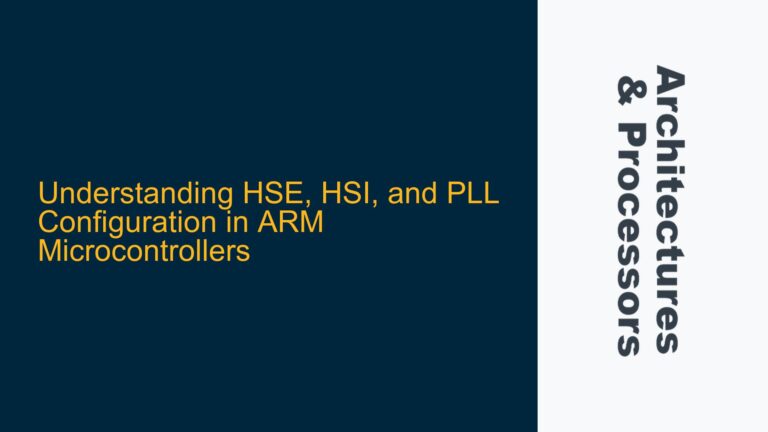ARM Coresight Capabilities for Internal IP Signal Observation
ARM Coresight is a powerful debug and trace infrastructure designed to provide visibility into the execution flow of ARM-based SoCs. While Coresight is primarily known for its ability to trace processor execution, it also offers capabilities to observe internal signals within IP blocks, such as state machine vectors, error signals, and status signals. These signals are critical for debugging complex SoC designs, especially when dealing with integration issues, timing violations, or functional errors.
Coresight achieves this through its modular architecture, which includes components like the Embedded Trace Macrocell (ETM), Trace Port Interface Unit (TPIU), and the Embedded Logic Analyzer (ELA). The ELA, in particular, is designed to capture and trace internal signals within an IP block. It can be configured to monitor specific signals and store their values in a trace buffer, which can then be analyzed offline or in real-time using Coresight-compatible debug tools.
However, leveraging Coresight for internal signal observation requires careful planning and configuration. The signals of interest must be routed to the ELA or other trace components, and the trace infrastructure must be properly initialized and configured to capture the desired data. This process involves understanding the Coresight architecture, the specific IP block being monitored, and the overall SoC design.
Challenges in Observing Internal Signals with Coresight
One of the primary challenges in observing internal signals using Coresight is the limited visibility into IP blocks that are not directly connected to the trace infrastructure. While Coresight provides a comprehensive framework for tracing processor execution, extending this capability to custom IP blocks or third-party IPs requires additional effort. The signals of interest must be explicitly routed to the trace components, which may involve modifying the RTL design or adding custom debug logic.
Another challenge is the potential impact on timing and area. Adding trace logic to an IP block can introduce additional latency and increase the area overhead, which may not be acceptable in resource-constrained designs. Furthermore, the trace buffer size is often limited, which means that only a subset of signals can be captured at any given time. This requires careful selection of the signals to be traced and efficient use of the available buffer space.
Additionally, configuring the ELA or other trace components to capture the desired signals can be complex. The configuration process involves setting up trigger conditions, selecting the signals to be traced, and managing the trace buffer. Misconfiguration can result in incomplete or inaccurate traces, making it difficult to diagnose issues.
Integrating ELA for Comprehensive Signal Observation
To address the challenges of observing internal signals, the Embedded Logic Analyzer (ELA) can be integrated into the SoC design. The ELA is a flexible and configurable component that can be used to capture and trace internal signals within an IP block. It supports a wide range of signal types, including state machine vectors, error signals, and status signals, making it well-suited for debugging complex designs.
The integration process begins with identifying the signals of interest and routing them to the ELA. This may involve modifying the RTL design to add debug ports or multiplexers that allow the signals to be selectively routed to the ELA. Once the signals are routed, the ELA must be configured to capture the desired data. This includes setting up trigger conditions, selecting the signals to be traced, and managing the trace buffer.
The ELA can be configured to capture signals based on specific events or conditions, such as the occurrence of an error or the transition of a state machine. This allows for targeted debugging, where only the relevant signals are captured, reducing the amount of data that needs to be analyzed. The captured data can then be exported to a trace file or analyzed in real-time using Coresight-compatible debug tools.
In addition to the ELA, other Coresight components can be used to enhance signal observation. For example, the Trace Port Interface Unit (TPIU) can be used to export trace data to an external debugger, while the Embedded Trace Macrocell (ETM) can be used to trace processor execution in conjunction with the ELA. By combining these components, a comprehensive debug and trace infrastructure can be created that provides visibility into both processor execution and internal IP signals.
Configuring Coresight for Optimal Signal Observation
To achieve optimal signal observation, the Coresight infrastructure must be carefully configured. This involves setting up the trace components, configuring the ELA, and managing the trace buffer. The configuration process begins with identifying the signals of interest and determining how they will be routed to the trace components. This may involve modifying the RTL design to add debug ports or multiplexers that allow the signals to be selectively routed to the ELA.
Once the signals are routed, the ELA must be configured to capture the desired data. This includes setting up trigger conditions, selecting the signals to be traced, and managing the trace buffer. The trigger conditions determine when the ELA will start and stop capturing data, and can be based on specific events or conditions, such as the occurrence of an error or the transition of a state machine. The signals to be traced are selected based on their relevance to the debugging task, and the trace buffer is managed to ensure that the captured data is stored efficiently.
In addition to configuring the ELA, other Coresight components must be set up to support signal observation. For example, the Trace Port Interface Unit (TPIU) must be configured to export trace data to an external debugger, and the Embedded Trace Macrocell (ETM) must be configured to trace processor execution. By combining these components, a comprehensive debug and trace infrastructure can be created that provides visibility into both processor execution and internal IP signals.
Debugging with Coresight and ELA: Best Practices
When using Coresight and ELA for debugging, it is important to follow best practices to ensure that the captured data is accurate and useful. One of the key best practices is to carefully select the signals to be traced. This involves identifying the signals that are most relevant to the debugging task and ensuring that they are routed to the ELA. It is also important to set up trigger conditions that capture the relevant events or conditions, such as the occurrence of an error or the transition of a state machine.
Another best practice is to manage the trace buffer efficiently. The trace buffer is often limited in size, which means that only a subset of signals can be captured at any given time. To make the most of the available buffer space, it is important to prioritize the signals to be traced and to use compression techniques to reduce the amount of data that needs to be stored.
In addition to managing the trace buffer, it is important to use Coresight-compatible debug tools to analyze the captured data. These tools provide a range of features for analyzing trace data, including the ability to view signal waveforms, search for specific events, and correlate trace data with processor execution. By using these tools, it is possible to gain deep insights into the behavior of the IP block and to identify and resolve issues quickly.
Finally, it is important to document the debugging process and the results. This includes documenting the signals that were traced, the trigger conditions that were used, and the results of the analysis. This documentation can be used to guide future debugging efforts and to share knowledge with other members of the design and verification team.
Conclusion
Observing internal signals within an IP block is a critical aspect of debugging complex ARM-based SoC designs. ARM Coresight, with its modular architecture and flexible components like the Embedded Logic Analyzer (ELA), provides a powerful framework for capturing and analyzing these signals. However, leveraging Coresight for internal signal observation requires careful planning, configuration, and integration.
By understanding the capabilities and limitations of Coresight, identifying the signals of interest, and following best practices for debugging, it is possible to create a comprehensive debug and trace infrastructure that provides deep visibility into the behavior of the IP block. This, in turn, enables the rapid identification and resolution of issues, ensuring the successful development of robust and reliable SoC designs.
